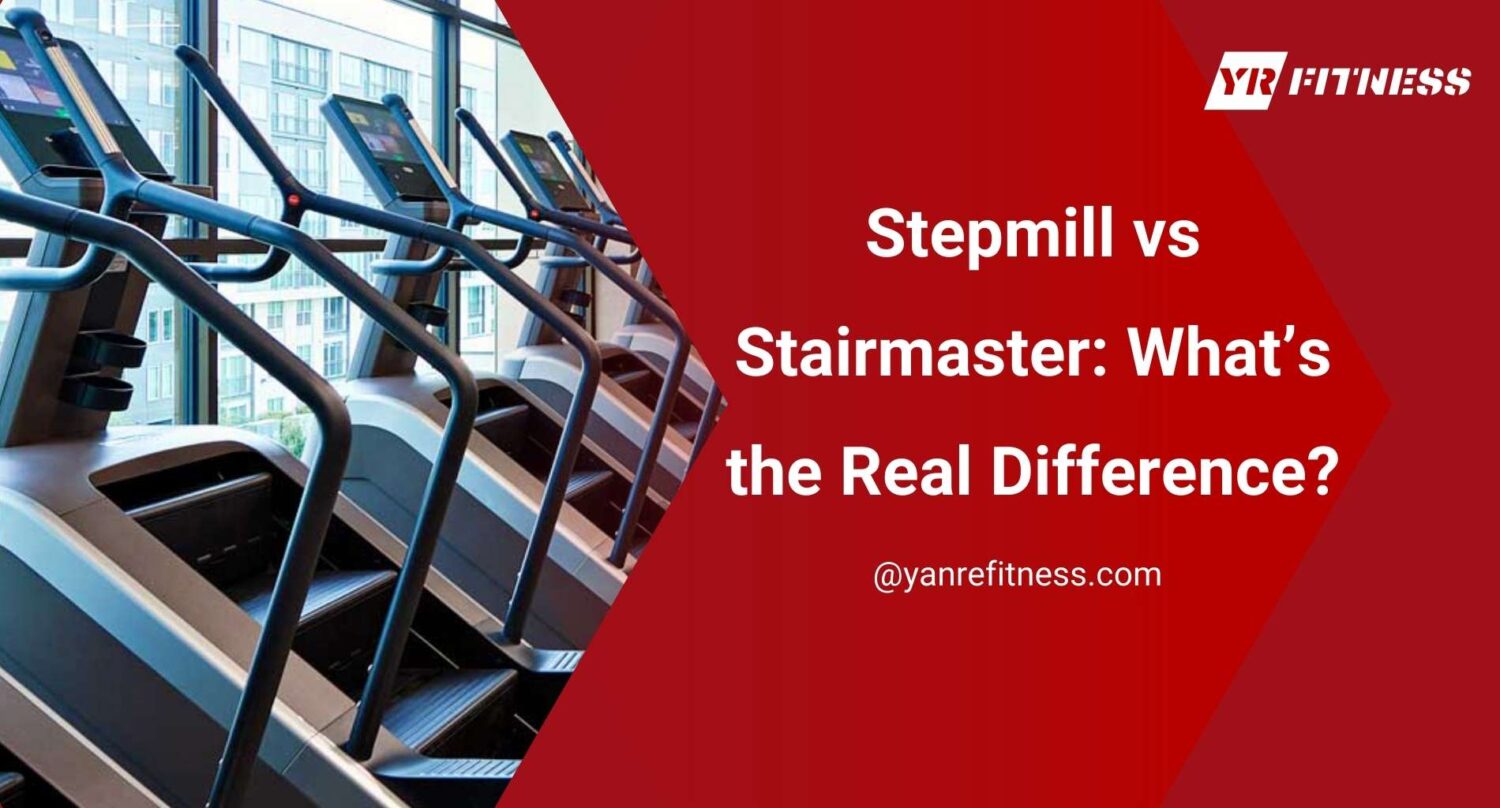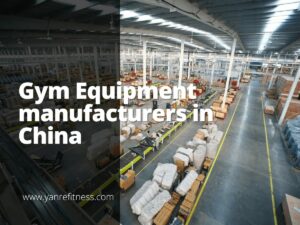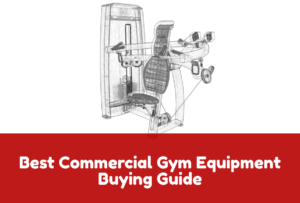When I bought my first Stepmill, I thought it was a Stairmaster. A few customer complaints later, I realized I’d made a $5,000 learning mistake.
That’s when I started asking better questions—not just what’s popular, but what’s actually right for our members and business model.
This post comes from experience—not theory. I run commercial fitness spaces and help other gyms and dealers choose smarter, not trendier.
Here, you’re going to see a clear, side-by-side breakdown of how Stepmills and Stairmasters differ in size, function, pricing, and maintenance. Everything you need to make a confident call as a buyer, not just a user.
So let’s dive in!
1. What is a Stepmill?
If you’ve ever mistaken a Stepmill for a Stairmaster, you’re not alone—I made that same call when equipping our first club.
Here’s the truth: a Stepmill uses a rotating escalator-style staircase. Real stairs. Continuously moving. No simulation here—it’s the real deal. Each step rises toward your members like an endless climb, making the workout feel functional and full-body, especially when built by a reliable commercial gym equipment manufacturer committed to quality and durability.
It’s taller and bulkier than most steppers, so it immediately stands out on the gym floor. But that size signals something powerful—it’s not just a machine. It’s a challenge.
Core Features
When you look under the hood of a Stepmill from YR Fitness, you’ll find features engineered for serious commercial use:
- A revolving staircase belt that mimics real stair climbing
- Adjustable speed controls for everything from slow climbs to sprint intervals
- Integrated console tech that tracks heart rate, calories, climb distance, and more
- Pre-set workout modes including fat burn, endurance, and HIIT intervals
Your clients aren’t guessing—they’re training with purpose. And your team has a machine they can program to match every level of intensity.
Designed for Serious Burn
Every step recruits multiple muscle groups, including:
- Glutes
- Hamstrings
- Quads
- Core
It delivers a cardio burn with a strength-building feel—similar to what you’d get from rowing machines that combine upper and lower body engagement. Whether it’s 15 minutes post-lift or a HIIT round built around intervals, the Stepmill never gives your clients an “easy mode.”
And that’s exactly what keeps them coming back.
Considerations
You’ll need to plan ahead. The Stepmill’s vertical height can challenge smaller rooms with low ceilings. And once it’s installed, it’s not something you roll around casually.
But if you’ve got the space—and the audience—it becomes a centerpiece. It communicates quality, seriousness, and commitment to high-performance training.
Bottom line: If you want a machine that does more than fill a corner, the Stepmill delivers performance, prestige, and longevity in one bold package.
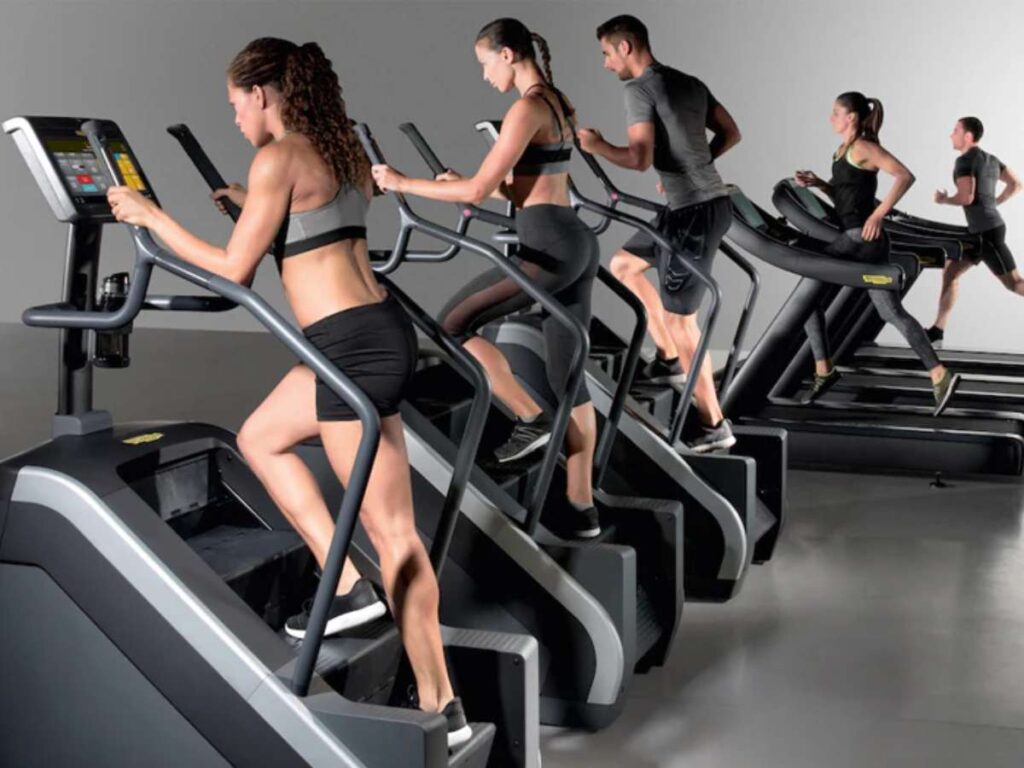
Ready to turn your cardio zone into a true member magnet? Explore YR Fitness’s commercial-grade Stepmills, built for durability and maximum calorie burn. Get in touch with our team and discover how to bring next-level training into your facility.
2. What is a Stairmaster?
Let’s clear this up right away—when people say “Stairmaster,” they’re usually talking about a stepper with 2 independent pedals that move up and down. No rotating staircase here.
The original StairMaster™ branded machine introduced this style, which is why the name stuck around. But in today’s market, “Stairmaster” often refers to a whole category of compact step machines.
It offers a stationary stepper that simulates stair climbing through a smaller range of motion.
Core Features
The Stairmaster isn’t basic; at YR Fitness, it’s commercial-grade, programmable, and highly versatile. Here’s what you’ll typically get:
- 2 independent foot pedals with smooth resistance
- Hydraulic or electronic systems for variable intensity
- Built-in console options with time, speed, calorie tracking, and interval modes
- Lightweight frame that’s easier to relocate or reposition in your space
In short, it’s everything you need for a low-impact stair climb—without the size or mechanical complexity of a Stepmill.
Ideal For
Don’t mistake “accessible” for ineffective. A Stairmaster still activates the lower body and gets the heart rate up—but in a more controlled, joint-friendly way. This makes it ideal for:
- Warmups and cooldowns
- Lower-intensity fat-burning sessions
- People recovering from injury or easing back into fitness
It fills an important gap for users who want stair-based cardio without high-impact stress.
Advantages
Compared to Stepmills, Stairmasters require less maintenance. Fewer mechanical components mean:
- Fewer service calls
- Lower cost of ownership
- Less downtime for your floor
And from a sales perspective? That’s an easier conversation with clients who need value, simplicity, and long-term usability.
Looking to add versatile, low-impact cardio options to your gym floor? YR Fitness offers commercial-grade Stairmasters that deliver performance and durability without eating up your budget or space. Contact us today and let’s equip your facility for every level of fitness.
3. Workout Intensity
When you’re choosing between a Stepmill and a Stairmaster, workout intensity isn’t just a fitness feature—it’s a business decision.
Why? Because intensity shapes how your members use the equipment, how long they stay, and what kind of results they see. It also affects how well your trainers can integrate it into group classes or personal training.
If you’re selling or installing these machines, you need to know how they actually perform under pressure—and what kind of client each one is built for.
Stepmill
The Stepmill isn’t for light sessions. It’s for clients who want to sweat, grind, and feel it.
Why Members Love It:
- Constant Movement: Rotating stairs force continuous engagement.
- Total Muscle Activation: Glutes, quads, hamstrings, calves, and core are fully involved.
- Quick Heart Rate Elevation: Ideal for short bursts or interval training.
- Calorie Burn in Minutes: Delivers visible results, fast.
Best Use Cases:
- High-Intensity Interval Training (HIIT): A go-to tool for challenging cardio blocks.
- Athletic Conditioning and Fat-Loss Circuits: Perfect for clients pushing performance goals.
- Advanced Fitness Clients: People who want to feel like every second counts.
If your gym’s personality is bold, energetic, and goal-driven—the Stepmill fits right in.
Stairmaster
The Stairmaster delivers steady, effective workouts—without overwhelming new or recovering users.
Why Members Trust It:
- User-Controlled Pace: Clients can go slow or moderate without strain.
- Low Joint Stress: Gentle on knees and ankles, perfect for rehab or older populations.
- Longer Sessions: Great for sustained fat-burning or warmups.
- Easy Entry Point: Approachable for new members and general users.
Best Use Cases:
- Recovery and Low-Impact Zones: Rehab spaces or cooldown stations.
- General Population Fitness: Widely accessible for all levels.
- Residential or Hotel Gyms: Perfect for mixed-use spaces with casual users.
This machine builds a solid reputation for gyms that prioritize comfort, accessibility, and balance.
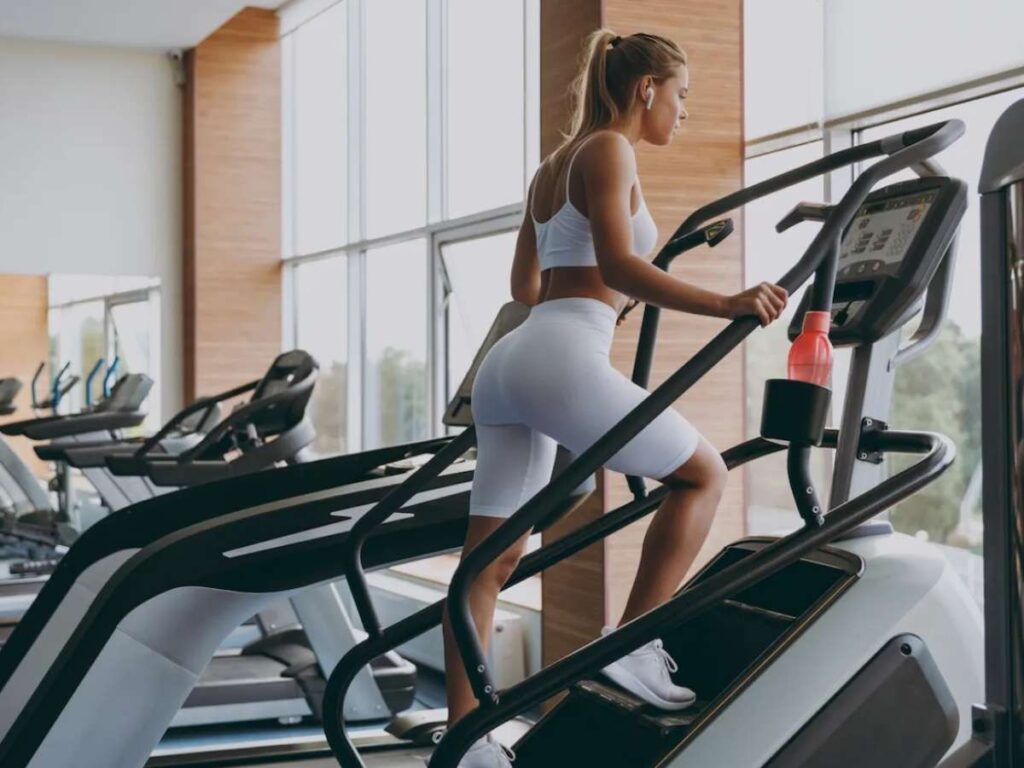
Want to offer cardio equipment that matches your members’ goals—from intense HIIT to gentle recovery sessions? YR Fitness manufactures both Stepmills and Stairmasters built for commercial performance and durability. Reach out today and let’s design the perfect cardio lineup for your gym.
4. Size and Space Requirements
Before you invest in a Stepmill or Stairmaster, you’ve got to think beyond the specs and look at your space.
The reality? These two machines are built for very different layouts. And if you don’t plan correctly, you risk floor congestion, safety issues, or even having to return the unit entirely.
Whether you’re outfitting a commercial gym, boutique studio, or mixed-use facility, use the table below to evaluate which option works best for your ceiling height, traffic flow, and installation flexibility.
Factor | Stepmill | Stairmaster |
Machine Footprint | Large: ~60-70″ long x 30-35″ wide | Compact: ~40-50″ long x 25-30″ wide |
Height Requirement | Ceiling clearance of 8–10 feet minimum (especially for taller users) | Low ceiling friendly: ~6.5–7.5 feet clearance usually sufficient |
Weight of Unit | Heavy: ~300–400+ lbs | Lighter: ~130–200 lbs depending on model |
Installation Difficulty | Requires 2+ people, stair/dolly lifts, and clear vertical space | Easier to transport and install solo or with 1 assistant |
Floor Type Compatibility | Stable, reinforced flooring recommended due to weight and motion | Works on most commercial-grade gym floors |
Mobility/Flexibility | Static once installed—not practical to move often | Portable—can be repositioned or moved when reconfiguring layout |
Visual Impact on Floor | Tall, commanding presence—can create a “centerpiece” feel | Low profile—blends easily into multi-use zones |
Multi-Unit Setup | Best for facilities with larger square footage | Ideal for smaller spaces or where you need multiple machines |
Key Takeaways:
- Stepmill: Think of it as a long-term fixture. It needs room, weight tolerance, and height. Perfect if you want to make a statement and have square footage to back it up.
- Stairmaster: More flexible and nimble. Ideal for facilities where space is at a premium or equipment rotation is common.
Designing your gym layout and need equipment that fits perfectly—without surprises? YR Fitness builds both Stepmills and Stairmasters engineered for commercial spaces of any size. Connect with us here and let’s plan a cardio zone that makes the most of your square footage.
5. Cost Comparison & ROI
When you’re making a big equipment purchase, it’s easy to compare sticker prices and stop there. But the real question is: “Which machine pays you back faster—and longer?”
For gyms and commercial resellers, that means thinking in terms of:
- Initial investment
- Maintenance costs
- Member usage frequency
- Perceived value by clients
- And most importantly—long-term ROI
Let’s compare both machines:
Stepmill: Bigger Investment, Bigger Impact
A Stepmill is a premium machine, and the price reflects that. Commercial-grade models typically range between $4,500 to $7,500, depending on the brand, tech features, and build quality.
But this isn’t just about upfront cost. It’s about what that investment brings you:
- A visually striking machine that attracts attention and elevates your brand
- The kind of intense workout experience that your advanced members crave
- A powerful tool for trainers building HIIT and conditioning circuits
That said, the Stepmill comes with higher maintenance costs. With more moving parts and heavier use, you’ll likely need to plan for periodic servicing and part replacements.
Stairmaster: Lower Cost, Faster ROI
The Stairmaster offers a much lower barrier to entry, with most models priced between $2,000 and $3,800. It’s affordable enough for small gyms, hotel fitness rooms, and even apartment facilities.
But don’t confuse affordability with low value. The Stairmaster delivers a steady, dependable workout experience with:
- Minimal upkeep
- Wide appeal across all fitness levels
- The ability to fit multiple units in tighter floor plans
Its strength lies in daily usability and accessibility. The average client will spend more time on it per session, and more types of users can comfortably enjoy it.
Smart equipment choices protect your budget and boost your bottom line. YR Fitness builds both Stepmills and Stairmasters with commercial durability and solid ROI in mind. Talk to our team today and let’s help you invest in machines that pay off for years to come.
6. Maintenance and Durability
When you’re outfitting a fitness facility or selling to one, you can’t afford equipment that constantly breaks down.
Downtime means lost revenue.
Frustrated members mean canceled memberships.
And unexpected repairs? They hit your bottom line hard.
That’s why it’s essential to evaluate how well each machine holds up under pressure—and what kind of maintenance support you’ll need along the way. Because performance is great, but consistency is what keeps the doors open.
Built for Commercial Use
Both machines are labeled as “commercial-grade,” but that doesn’t mean they perform the same under stress.
- Stepmills are designed for high-intensity, high-traffic environments. They use heavy-duty frames, motorized belts, and internal drive systems to handle intense workouts and heavier users.
- Stairmasters have fewer moving parts and typically use hydraulic or electronically controlled pedals. They’re easier on themselves and on your facility—making them ideal for light-to-moderate use settings.
Always verify the usage rating (light, medium, full-commercial) from the manufacturer. Not all “commercial” models are created equal.
Servicing Needs
Here’s where the 2 machines really diverge:
Stepmill:
- Requires periodic inspection of the motor, belt system, step alignment, and structural integrity
- Needs more frequent servicing due to moving stairs and mechanical complexity
- Best maintained with a service contract or in-house tech for busy facilities
Stairmaster:
- Lower servicing demands—often limited to pedal resistance, console checks, and minor lubrication
- Fewer mechanical issues in long-term usage
- Easily maintained by staff or with quick technician visits every few months
Spare Parts and Support
Before you commit, check:
- How accessible are replacement parts for each brand?
- Are you getting support from a local distributor, or is everything overseas?
- What kind of warranty are you working with?
Durability and service support are as crucial as the workout itself. At YR Fitness, we manufacture Stepmills and Stairmasters built for relentless commercial use—and back them with accessible parts and dependable service. Connect with our team today to keep your gym running smoothly, without surprises.
7. Which One to Choose Between Stepmill and Stairmaster
By now, you’ve seen how different these two machines really are. One isn’t “better” than the other—it all comes down to who you’re serving, what kind of training you offer, and what type of value you want your equipment to deliver.
Let’s break it down clearly so you can make a smart, ROI-driven decision.
Target Clients
Understanding who your core members are makes this decision much easier.
The Stepmill is ideal for serious fitness users—people who want to train hard, sweat fast, and push limits. The Stairmaster fits best in general-access gyms with a broader mix of ages, fitness levels, and comfort zones.
If your facility caters to athletes, tactical units, or body transformation clients, the Stepmill is the clear winner. But if you serve a more mainstream crowd, the Stairmaster will get more daily use.
Programming Style
Different machines support different training styles.
Stepmills integrate perfectly into HIIT sessions, circuit training, athletic development, and short, high-effort cardio blocks. Stairmasters are great for warmups, cooldowns, long-duration cardio, and general movement-based recovery.
If your trainers coach intensity, explosive work, or competitive training, the Stepmill helps reinforce that identity. If your programming leans toward accessibility and progression, the Stairmaster fits naturally.
Facility Space
You can’t ignore your floor plan—and vertical clearance matters just as much as floor area.
- The Stepmill requires at least 8–10 feet of ceiling height and a permanent footprint.
- The Stairmaster fits smaller spaces, lower ceilings, and offers easier mobility for floor plan changes.
The Stepmill is a statement piece, but it needs room to breathe. The Stairmaster blends into almost any gym layout.
Maintenance Requirements
Operational costs are about more than price tags—they include ongoing care and repairs.
Stepmills need more regular servicing and should be supported by either in-house maintenance or a service contract. Stairmasters are simpler to manage, with fewer parts and less wear, making them ideal for gyms without tech support.
If you’re running multiple locations or lack dedicated maintenance staff, the Stairmaster offers peace of mind with minimal hassle.
Ready to choose equipment that matches your members and your business goals? At YR Fitness, we help gyms pick the right mix of Stepmills and Stairmasters for their unique space, training style, and budget. Contact us here to design your cardio lineup with confidence.
Conclusion
I’ve been where you are—deciding what belongs on the gym floor. That first misstep taught me to look deeper.
You’ve got the facts now. Stepmill vs. Stairmaster: 2 machines, 2 paths. The right choice depends on your members, your mission, and your space.
Don’t wait until after opening day to regret your decision. The best time to choose right is now.
Which one fits your floor—and your future?
Let’s make your decision easier.
Contact us today, and let’s build something that lasts.
Related articles:
